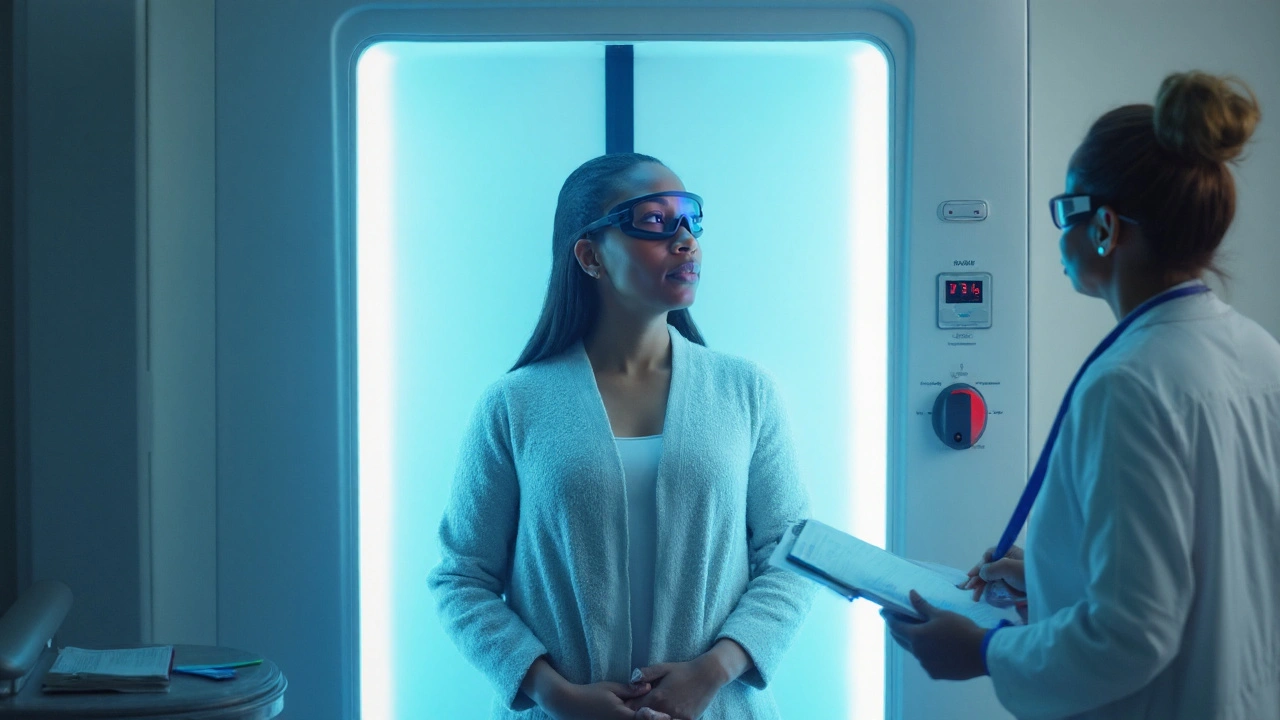Home Phototherapy: Easy Light Therapy You Can Do at Home
Ever wondered why doctors keep talking about phototherapy? It’s basically using light to treat things like skin conditions or low mood. The good news? You don’t need a clinic visit to get the benefits. With the right lamp, a bit of know‑how, and safety smarts, you can set up a phototherapy routine right in your living room.
How Home Phototherapy Works
Light therapy works by sending specific wavelengths of light into your skin or eyes. For skin issues like psoriasis or eczema, UVB light slows down the cell growth that causes patches. For mood, bright white light mimics sunshine and helps reset your internal clock, easing seasonal affective disorder (SAD). The key is using the correct type of light – UVB for skin and bright white (10,000 lux) for mood.
Most home kits use LED panels or compact fluorescent bulbs. They’re cheaper than hospital‑grade machines and still deliver the right spectrum when you follow the instructions. Always check the lamp’s label for UVB or “full‑spectrum” claims before you buy.
Tips for Safe and Effective Use
Start slow. Begin with just a few minutes a day and slowly work up to the recommended session length – usually 10‑20 minutes for skin, 20‑30 minutes for mood. Keep the lamp at the right distance: about 12‑18 inches from your skin for UVB, and 24‑36 inches for bright white light aimed at your eyes.
Protect the areas you don’t want to treat. If you’re using UVB for a rash on your arm, cover the rest of your body with loose clothing. For mood lamps, wear sunglasses if you’re sensitive to glare, but don’t block the light reaching your eyes.
Never look directly at the bulb unless the device is designed for eye exposure. Most mood lamps have a diffuser that spreads light evenly, so you can sit comfortably at a desk or by the couch.
Track your progress. Write down how you feel after each session – skin looks clearer, mood lifts, energy rises. If you notice any redness, itching, or eye strain, cut the time in half or stop for a day and see how you feel.
Combine phototherapy with healthy habits. Stay hydrated, protect treated skin with sunscreen during the day, and get regular sleep. Light therapy works best when it’s part of a balanced routine.
Finally, talk to a professional if you have doubts. A dermatologist can tell you the exact UVB dose you need, and a therapist can confirm the right brightness for SAD. A quick check can keep you safe and get the most out of your home setup.
With the right lamp, a little discipline, and these practical tips, home phototherapy can become a simple part of your weekly health plan. No more waiting rooms – just light, a comfy chair, and the feeling that you’re taking charge of your well‑being.

Light Therapy for Plaque Psoriasis: Benefits, Types, Safety, and How to Start
Light therapy can calm plaque psoriasis fast. See how it works, who it’s for, types, safety, costs, clinic vs home, and a step-by-step plan to get relief.
Read More- August 20, 2025
- Neil Hirsch
- 8 Comments